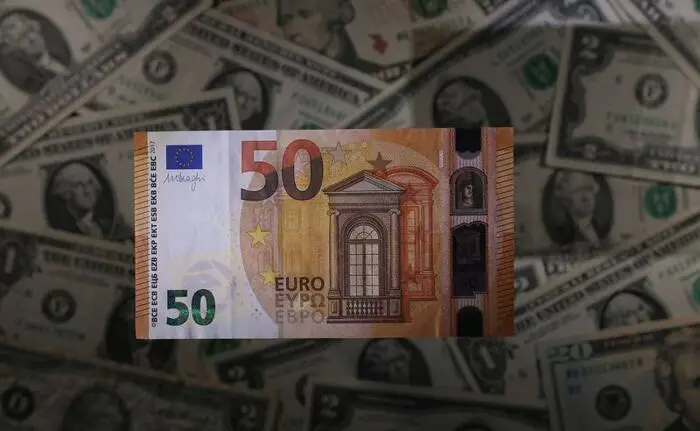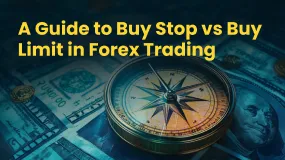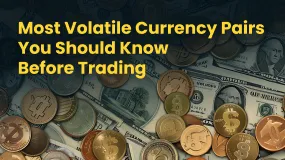简体中文
繁體中文
English
Pусский
日本語
ภาษาไทย
Tiếng Việt
Bahasa Indonesia
Español
हिन्दी
Filippiiniläinen
Français
Deutsch
Português
Türkçe
한국어
العربية
Currency markets calm, euro-dollar steady ahead of U.S. inflation data
Abstract:The Aussie and Kiwi dollars were trading near multi-week highs on Thursday as investors turned more bullish on risk assets such as equities while the dollar held in a narrow range ahead of U.S. inflation data due later in the day.

Currency market moves were small on Thursday as investors waited for key data on U.S. inflation to give clues on the Federal Reserves policy tightening trajectory.
Investors appetite for riskier assets has been hurt so far this year by expectations that the U.S. Federal Reserve will begin tightening monetary policy, starting with a rate hike at its March meeting.
Strong earnings helped global stocks rise on Wednesday, but they struggled to maintain this momentum during the Asian and early European sessions on Thursday.
Markets were focused on U.S. inflation data due later in the session. The headline consumer price index is expected to have increased more than 7% in January, year-on-year, a level reminiscent of the inflation shocks of the 1970s and 1980s.
“The higher the current inflation rates the stronger the perception is likely to be amongst market participants that the Fed will have to act even faster, more decisively and for a prolonged period of time than is currently expected,” wrote Commerzbank FX and EM analyst Antje Praefcke in a client note.
“That in turn is likely to provide a boost for the dollar.”
At 0825 GMT, the dollar index was down by less than 0.1% on the day, at 95.503. After large swings in the previous two weeks, it was on track for a minimal weekly change so far this week.
Investors are pricing in a 71% chance of the Fed hiking rates by 0.25 basis points at its March meeting, with as many as five rate hikes priced in for the year overall. [IR/PR].
Expectations that the European Central Bank would be slower to hike, as policymakers have been less concerned about inflation, generally kept euro-dollar subdued. But this changed last week when the ECB took a more hawkish stance at its meeting, prompting euro-dollar to jump to a three-week high of $1.1483.
At 0831 GMT, the euro was at $1.1428, little changed on the day. European government bond yields continued to edge higher, having surged last week following what analysts labelled as the ECBs “pivot”.
The Australian dollar, which is seen as a liquid proxy for risk appetite, was up 0.1% at $0.71875, while the New Zealand dollar was also a touch higher.
Also suggesting some appetite for risk, the Japanese yen hit a one-month low versus the dollar.
The Swedish crown was a touch lower against the dollar and euro after the Swedish central bank kept policy plans broadly unchanged, stressing that surging inflation is temporary and that it remains too early to begin withdrawing support from the economy even as the effects of the COVID pandemic fade.
In cryptocurrencies, bitcoin was around $44,260, in its third consecutive week of gains. But it remains far below the all-time high of $69,000 it hit last November.

Disclaimer:
The views in this article only represent the author's personal views, and do not constitute investment advice on this platform. This platform does not guarantee the accuracy, completeness and timeliness of the information in the article, and will not be liable for any loss caused by the use of or reliance on the information in the article.
Read more

Forex Swaps Explained in 5 Minutes – Everything You Need to Know
Stumbled over the term forex swap and could not find its meaning, relevance and implication? In this quick guide, we’ll explain forex swaps in the simplest terms possible.

A Guide to Buy Stop vs Buy Limit in Forex Trading
Want to make a mark in forex trading by seizing hidden growth opportunities or preventing capital loss? Learn the art of locating orders. With an in-depth understanding of order functionality involving the impact on trades, traders can successfully navigate the forex market. As far as buying is concerned, traders need to acquaint themselves with a buy limit and a buy stop. These two orders play a critical role in helping traders enter and exit the market efficiently.

Is Forex Trading Halal? Exploring Islamic Perspectives
Can faith and finance go hand in hand in the life of a Muslim trader? Can they participate in trading without compromising their beliefs or should they avoid the market altogether? What side should they choose? Let’s examine the forex market through the lens of Islamic tradition and reach a clear conclusion.

Most Volatile Currency Pairs You Should Know Before Trading
Do you think that trading in the most volatile currency pairs is a loss-making proposition? Maybe you are missing out on the profit waiting for you! Yes, you still need to be tactical and strategic when opening and closing positions. However, the increased possibility of dramatic price movements in currency pairs opens up avenues for higher profits while also exposing you to market risks. In this article, we will discuss the most volatile forex pairs worldwide. Read on!
WikiFX Broker
Latest News
Forex Swaps Explained in 5 Minutes – Everything You Need to Know
Telegram vs WhatsApp vs Discord: Which Platform Is Best for Forex Signals?
Investment Scam Alert: FCA Identifies 15 Scam Brokers
BaFin Issues Consumer Alerts Against Unauthorised Platforms
Retired Man Loses Life Savings to ‘Sister Duo’ in Forex Scam
Exploring Laxmii Forex: Kharadi's Financial Hub
TradexMarkets: 5 Troubling Signs You Shouldn’t Ignore
A Guide to Buy Stop vs Buy Limit in Forex Trading
SEC Implements New Rules for Crypto-Asset Service Providers
Binance Users Convert Crypto and Withdraw Instantly to Mastercard
Currency Calculator


